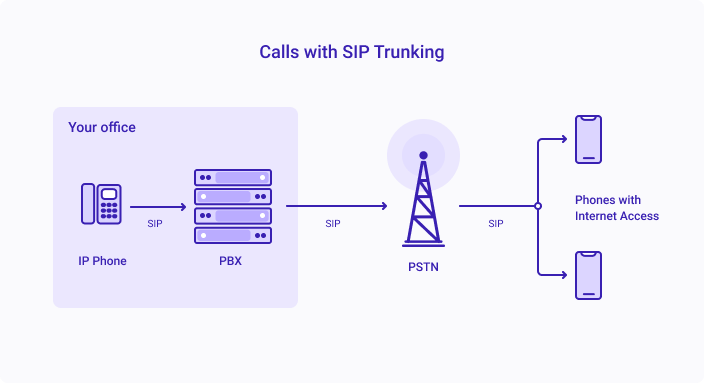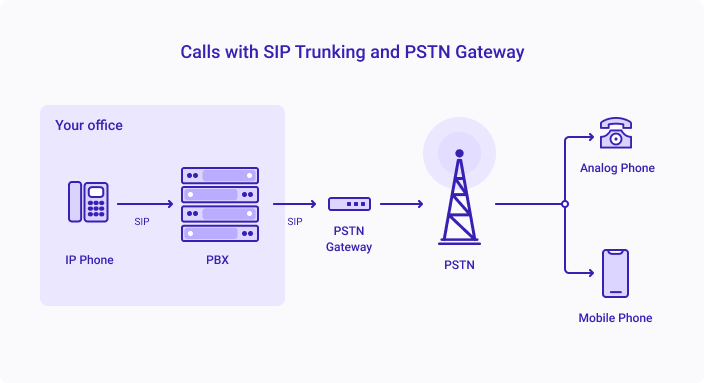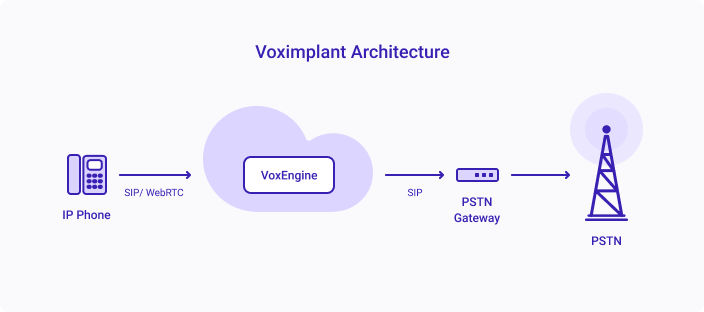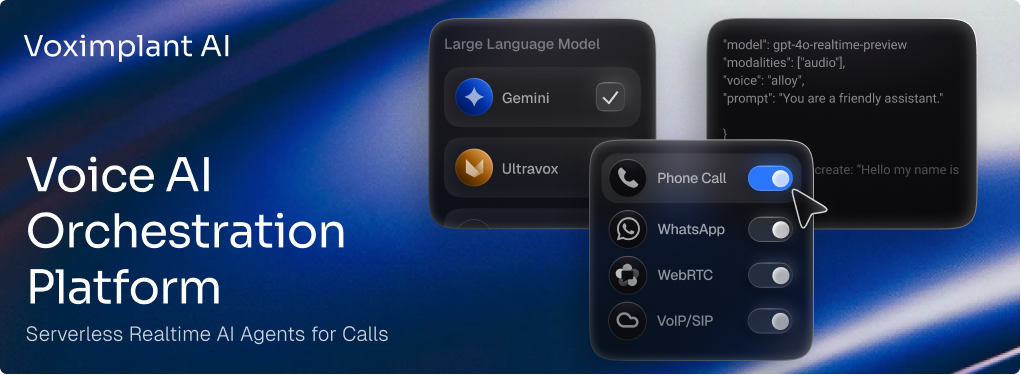When a user connected to an enterprise PBX makes a VoIP phone call to a customer’s landline or mobile phone, the communications protocol has to be converted. In this article, we explain how gateways and SIP trunks enable interoperability between a PBX and the PSTN.
The hub for enterprise telephony is the PBX, or Private Branch Exchange. These systems provide VoIP telephony services based on the SIP protocol. All VoIP phones communicate with your PBX using SIP to initiate and terminate communications sessions.
For instance, when an employee makes an internal call and dials a receptionist’s phone, your PBX receives the SIP signaling messages that identify the destination and routes the call. The PBX handles all communications that originate and terminate on your local business network.
When a user makes an external VoIP call to a customer landline or mobile phone, the PBX has to route the call to the PSTN, or Public Switched Telephone Network.
What is the PSTN?
The PSTN has been transformed over generations of technology from the classic old telephone service that connected landline phones using analog circuits and copper wires. Today, the PSTN mostly uses modern broadband IP networks to transport telephony signals and ISDN protocols to set up and terminate communications sessions.
The “last mile” networks that connect residential customers to the PSTN are based on DSL and cable modems. Business customers are increasingly connected to the PSTN by SIP trunks that are carried over MPLS or public internet services.
VoIP-to-PSTN Call
In addition to internal communications, the PBX enables external VoIP calls. In other words, the PBX provides an interface between the inside and outside worlds.
When you make a VoIP call to the PSTN, your PBX first identifies that this is not a local number. Then, it routes the VoIP call to your PSTN service provider using a SIP trunk.
SIP Trunking for Internet-Based Calling
SIP trunking is a virtual alternative to traditional ISDN digital access circuits, or primary rate interface (PRI). SIP trunks transfer voice calls over the Internet and enable your PBX to route calls to the PSTN.
Companies use SIP trunks to connect enterprise telephony services, including contact center inbound, outbound and toll free services. Since there are no traditional phone lines involved, companies reduce their calling costs. Simply put, you pay for a call like any other data transmission over the Internet.

The main drawback of the SIP trunking is that it requires an Internet connection. Not all people have access to the Internet. Some customers continue to use ISDN trunks instead of SIP trunks. In this case, their PBX uses gateways to connect to the PSTN.
PSTN Gateways
A PSTN gateway is a device that converts VoIP calls to the ISDN primary rate interface for connectivity to the PSTN. Such gateways have PRI ports for PSTN phone lines and an Ethernet connector for the IP network.
There are various implementations of VoIP gateways and SIP trunk connectivity. Here’s a simple scheme to show a typical deployment.

With PSTN gateways, you can connect the PBX with digital service from legacy telco carriers. By contrast, most advanced cloud telephony providers do not support ISDN PRI interfaces and require businesses to access their services using SIP trunks.
How Voximplant Routes VoIP calls to the PSTN
Voximplant simplifies business phone system infrastructure. We have our own PSTN gateways connected to the PSTN via SIP.
Voximplant allows you to route calls from our cloud to any endpoint, including PSTN phone numbers. The process is broken down into three steps:
- A VoIP user connects to the Voximplant cloud directly via SIP or WebRTC
- VoxEngine receives and routes the call
- PSTN gateways connected to us via SIP forward the call to the PSTN network






